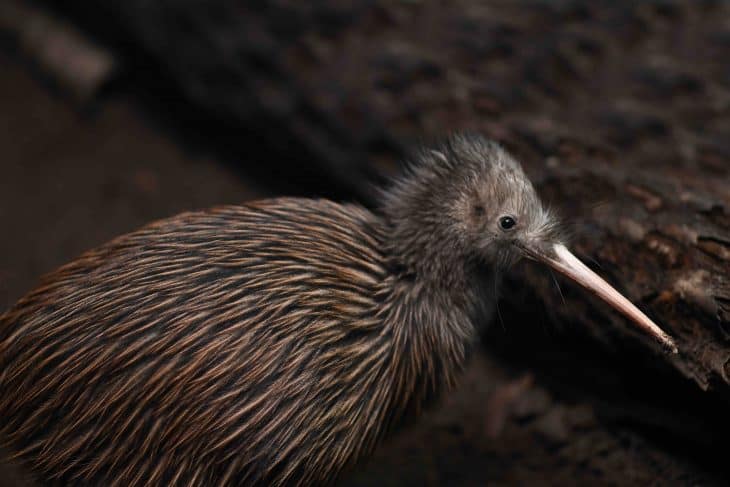
It’s impossible to talk about New Zealand without the kiwi bird coming up sooner or later. That’s because they are the iconic native animal of New Zealand. They’re special little things, and they are entirely unique to New Zealand. This means you won’t find them in any other country in the world!
However, it might not be as simple as you believe to see a kiwi bird. You won’t see them in every corner of New Zealand. Out of all the Kiwi bird facts out there, this one is probably one of the most surprising. Why are they so hard to look for? The first reason would be, the elusive kiwi is not only nocturnal, but it also forages in forests making it difficult to spot even if you are in the correct spot. However, there are a few areas in New Zealand where your chances of sighting a kiwi bird are substantially boosted. Some species have daytime habits, and some kiwis are kept in captivity for display and conservation purposes.
It’s definitely a mystery how the kiwi birds got to New Zealand. There are three popular theories. The first is that kiwi ancestors existed when New Zealand separated from Antarctica and Australia 60 million years ago. The second point of contention is that when the land separated, kiwis travelled from island to island, until they settled at New Zealand. The kiwi birds’ ancestor travelled from island to island to reach New Zealand, according to the third theory. Although there is evidence that this is feasible, the truth remains a mystery.
Let’s go on to check out our list of the 40 most popular Kiwi bird facts below to learn more about these iconic birds of New Zealand.
- Kiwis have 5 different species between them.
- Out of those 5 species, 4 kiwi species currently have the vulnerable conservation status set by the International Union for Conservation of Nature
- The fifth kiwi species, the little spotted kiwi, has the less urgent near-threatened conservation status.
- Kiwis lay the biggest eggs among birds, each egg weighing around 20% of the female’s weight.
- At most, only 10% of kiwi chicks survive to reach adulthood.
- Kiwis descend from the extinct Proapteryx of the Miocene Epoch.
- Unlike kiwis, Proapteryx could fly, allowing it to migrate to New Zealand in prehistoric times.
- The Proapteryx in New Zealand eventually evolved into kiwis over of 15 million years and lost the ability to fly in the process.
- Kiwis first encountered humans in the 13th century AD, with the arrival of the Maoris.
- In 1813, British scientist George Shaw documented kiwis for the first time.
- Captain Andrew Barclay assisted Shaw in getting kiwis as research specimens.
- Frederick Nodder provided Shaw with illustrations to accompany his published research.
- In 1851, the London Zoo became the first zoo in the world to exhibit kiwis.
- Humans first bred kiwis in captivity in 1945, at Napier in New Zealand.
- As of 2013, only 13 zoos outside of New Zealand exhibit kiwis.
- Kiwis actually have more or less the same size as a chicken.
- Their closest relatives include the emus, ostriches, and the rhea birds.
- They also have close relations with Madagascar’s extinct elephant birds.
- Surprisingly, kiwis aren’t that closely related to New Zealand’s extinct moa birds.
- Kiwis currently appear on New Zealand’s one-dollar coin.
Kiwis refer to more than just birds.
In particular, it refers to the people of New Zealand, also known as New Zealanders. When used in this context, the word gets treated as a proper noun, with a capitalized letter K. This comes from how Kiwi started out as an affectionate nickname for soldiers from New Zealand back in World War I. These soldiers wore kiwi birds on their uniform patches. The nickname stuck and was eventually used to describe all people of New Zealand after the war.
Kiwis have symbolized New Zealand as far back as the 19th century.
Here’s another interesting example of kiwi bird facts. Soldiers from New Zealand first started wearing kiwi birds on their uniform patches in the late-19th century. Since then, the kiwi bird remains a unique animal of New Zealand added to its appeal as a national symbol.
After World War I, kiwi birds appeared on the badges, coat of arms, and crest, of not just cities in New Zealand, but also clubs and other private organizations. After the founding of the Royal New Zealand Air Force, they also included a kiwi in the roundels they put on their planes. Both the New Zealand Rugby League and the New Zealand National Rugby Team also include kiwis on their logos.
The origin of the word kiwi remains in question.
Most linguists consider it as purely Maori in origin, with the word traditionally based on an imitation of the bird’s sounds. However, some linguists instead think that the word comes from the proto-nuclear Polynesian language, the root of all South Pacific languages. In particular, they think kiwi originally referred to the Bristle-thighed curlew, whose brown bodies and long, narrow beaks make them look like the kiwis of New Zealand.
Great spotted kiwis make up the biggest kiwis.
Males stand around 45 centimeters tall, with the females growing even bigger, standing up to 50 centimeters tall. Their beaks can grow up to 12 centimeters long, and the birds as a whole can weigh up to 2.6 kilograms for males and 3.3 kilograms for females. They tend to have either charcoal grey or light brown feathers, which feature the black spots from which they get their name.
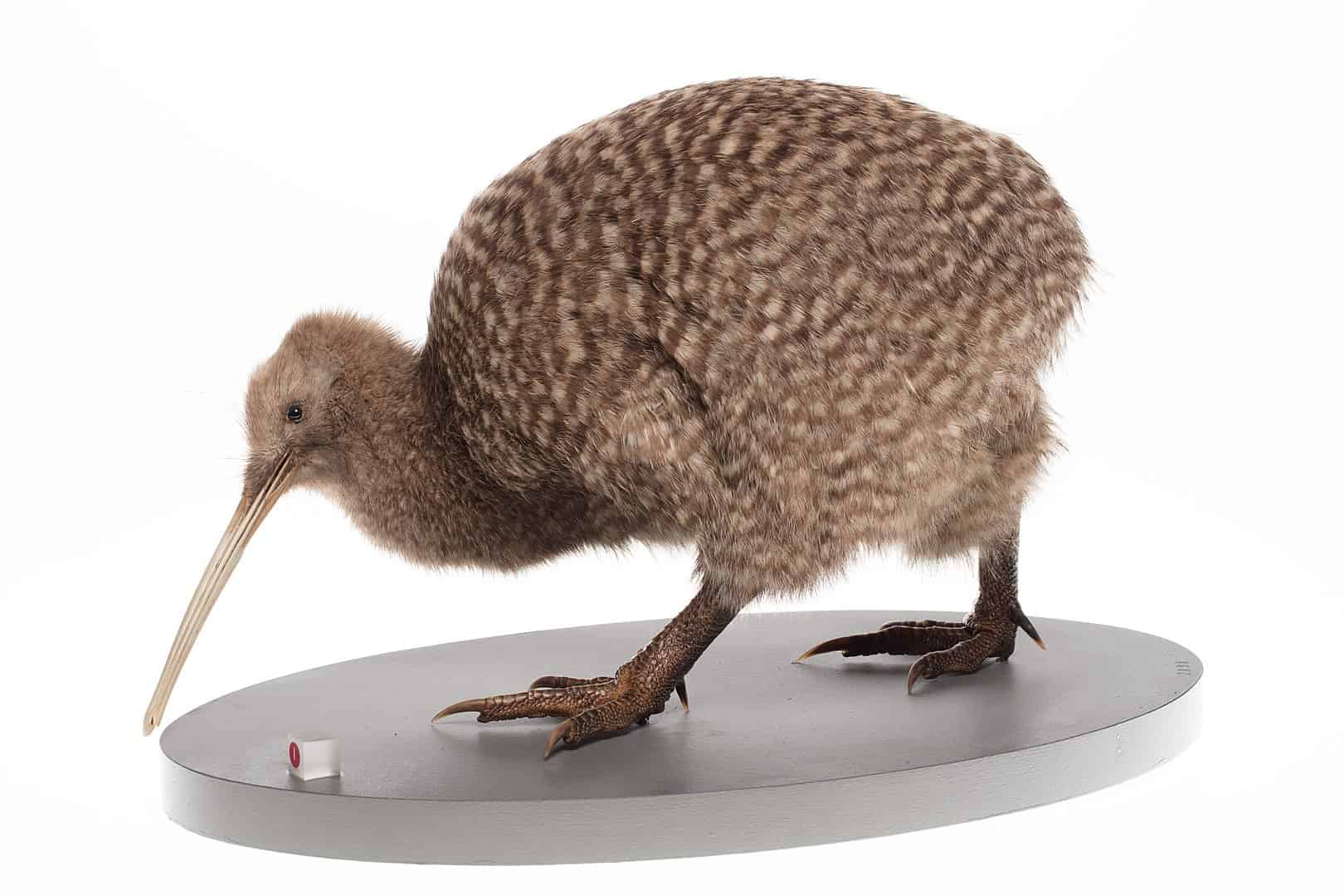
They also tend towards aggressiveness.
The males, at least, become aggressively defensive of their territory, which can measure up to 25 hectares in area. When fighting off intruders, the birds use their powerful legs to claw at the intruders, wounding and forcing them to leave. Scientists still aren’t sure how effective they can get, though, as they have observed up to five birds sharing a square kilometer of land between them. Also, kiwis avoid fighting predators unless they absolutely have to, they would rather hide or run.
Little spotted kiwis make up the smallest kiwis.
At most, they stand only 25 centimeters tall, with females of the species weighing up to only 1.9 kilograms. Their small size leaves them very vulnerable to predators, which they have little ability to defend themselves against. This has forced the New Zealand government to relocate most of the remaining little spotted kiwi population to small islands away from the main islands. Those of the birds remaining on the main island live inside fenced areas, to protect them from predators.
Despite their size, they can get quite territorial too.
At least when they’re not up against predators, of course. When up against other kiwis and birds intruding on their territory, the little spotted kiwi will flash its claws first as a warning for the intruder to leave. If they don’t, then the little spotted kiwi will attack to try and make the intruder leave.
Scientists first discovered the okarito kiwi in 1994.
Scientists once considered them as part of the brown kiwi species but recognized them as separate species based on genetic evidence. Their name comes from the only place in the world where the birds live, the Okarito Forest on New Zealand’s South Island. Appearance-wise, they look like brown kiwis, but okarito kiwis lay the most eggs among the birds, up to 3 eggs at a time. They also live the longest, with scientists finding specimens that point to an average lifespan of up to 100 years for the birds.
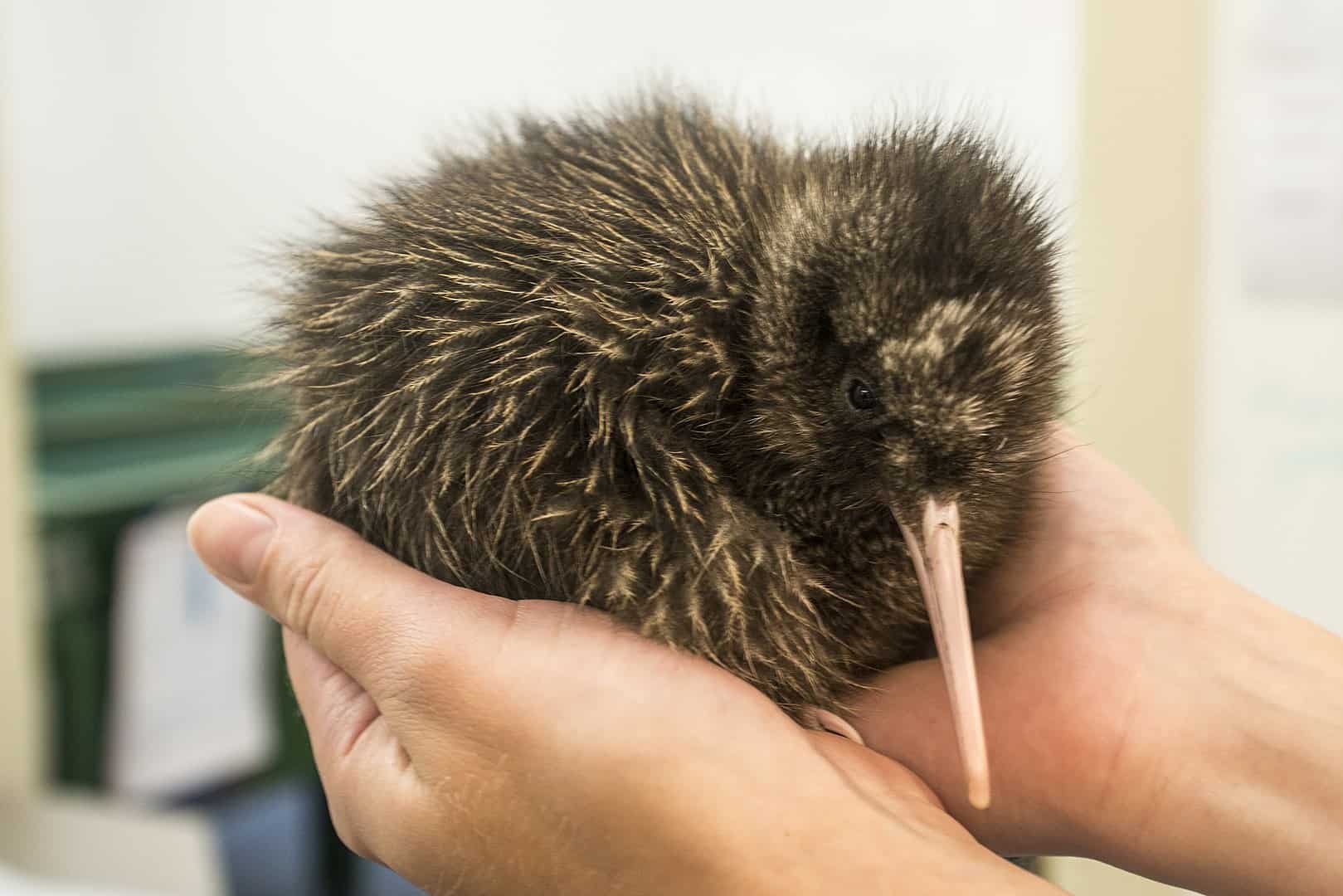
Scientists divide brown kiwis into northern and southern variants.
Specifically, northern brown kiwis live on New Zealand’s North Island, while southern brown kiwis live on New Zealand’s South Island. Both species can grow to stand up to 40 centimeters tall, with a weight of around 2.8 kilograms. They tend to have reddish-brown feathers and can lay up to 2 eggs at a time.
The southern variant has mostly lighter colors for their feathers compared to their northern cousins, though. They also have a rare subspecies, numbering only 300 birds at most, which live on New Zealand’s Southern Alps. This subspecies has thicker feathers to adapt to the cold temperatures of their homes, at an altitude of 1.5 kilometers above sea level. The small population of the subspecies has led the New Zealand government to seal off the area they live in to protect the birds.
Kiwis sometimes produce partial albinos.
These specimens tend to have white streaks around their heads, but this occurs very rarely. The first known example goes back to the 18th century, documented with a painting located at Otorohanga in New Zealand. Another specimen currently stays on exhibit at Canterbury Museum in Christchurch, New Zealand. Finally, scientists discovered an injured specimen in 2004, which recovered after receiving medical treatment. Said specimen later became part of a breeding program for kiwis.
Kiwis have poor eyesight.
This results from the fact that they have the smallest eyes out of all the bird species. And while their eyes have special adaptations that go with the birds’ nocturnal lifestyle, it can only help so much. The small size of their eyes just doesn’t let them see much at all.
The rest of the kiwi’s senses have superior performance to adapt.
Their sense of smell actually gives kiwis a unique distinction among birds, who usually have a superior sense of sight. Instead, kiwis have an especially superior sense of smell, letting them detect predators or prey long before they can see them. Other senses, such as hearing and touch, have similarly superior performance.
Scientists even did some tests between blind and normal kiwis and found no difference in ability. This led them to conclude that kiwis have adapted to use their other senses to the point that even getting blinded would not affect their lifestyles at all.
Kiwis have other major differences compared to other birds.
Most birds tend to have hollow bones, to minimize their weight for flying. Kiwis, however, have marrow inside their bones, making them heavier. Not that it really matters, as kiwis can’t fly anyway. Kiwis also have feathers with a different build compared to those of other birds, with feathers actually closer to hair in appearance. Female kiwis also have both of their ovaries functional, unlike most female birds who have only one functional ovary.
Kiwis mate for life.
If one or another of a mated pair dies, the survivor will not look for a replacement. The mating season lasts from June to March of the following year. The birds mate at night, this happens every 3 days, with females staying fertile for up to 20 years.
Female kiwis suffer great stress after mating.
Kiwis have eggs that can go up to 20% of the mother’s mass. For humans, this becomes the equivalent of giving birth to a 6-year-old child. It becomes especially difficult during the last days of pregnancy before the bird lays her eggs. At that point, the eggs push against the mother’s insides so much that she cannot eat.
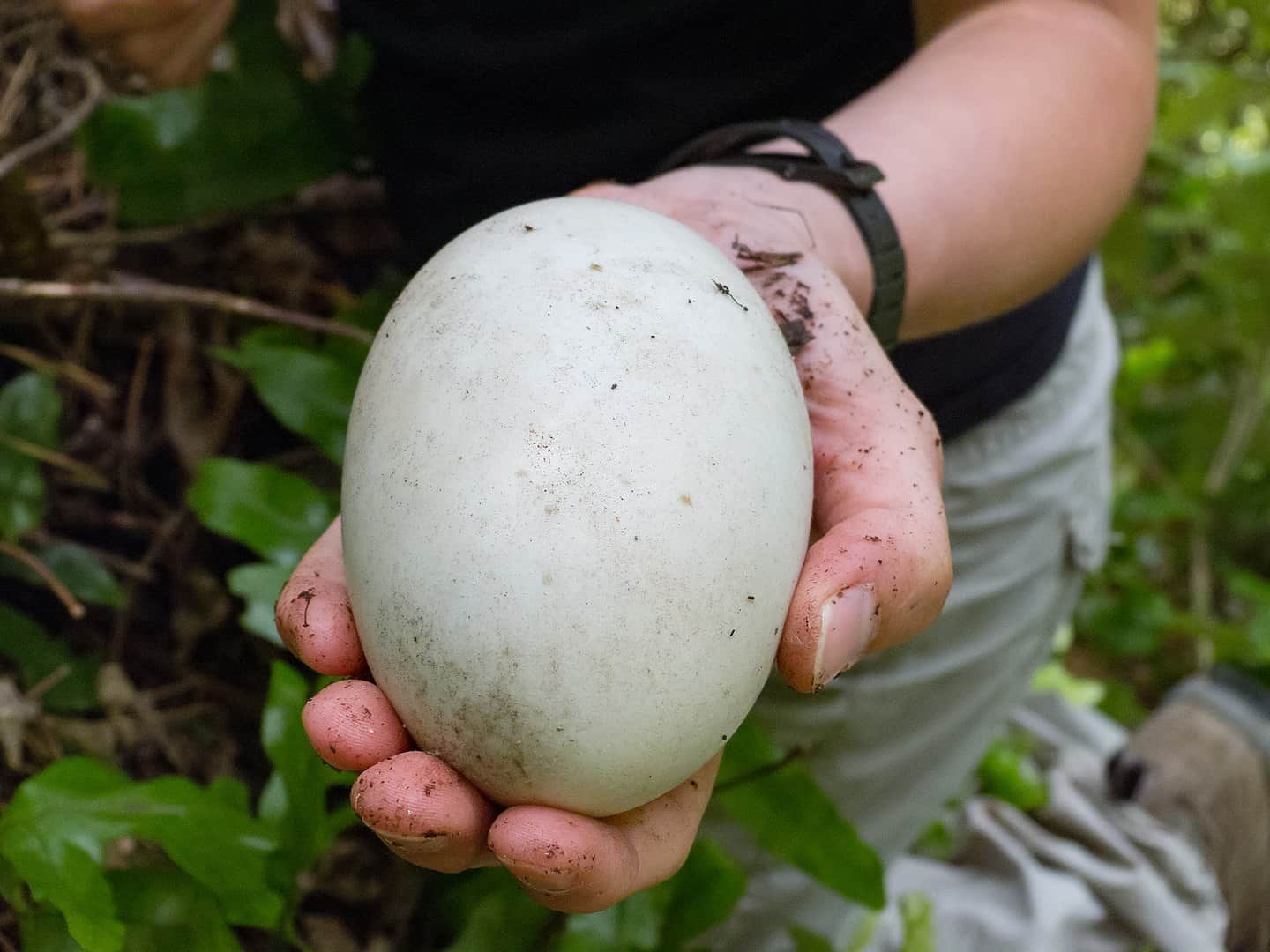
Kiwis only met predators with the arrival of humans in New Zealand.
Before humans arrived in New Zealand, kiwis only had to deal with bats and falcons as predators. Few reptiles lived on the islands, and they posed no threat to kiwis. Humans, however, introduced dogs and other large, mammalian predators to New Zealand. Dogs proved especially devastating to the kiwi population, finding them easy to prey on.
Cats and stoats also prey on kiwis, in particular, their chicks. In fact, stoats account for an estimated half of all kiwi chick deaths today. This introduction of mammalian predators actually resulted in the kiwis’ nocturnal lifestyles today, as a way to avoid predators. Before humans arrived bringing more predators with them, kiwis actually stayed active during the daytime.
Human activities also pose a threat to the kiwis’ future.
Humans commonly kill kiwis with their cars by accident, usually when the birds cross a road. Cars can move too quickly and kiwis appear so small that drivers may not have the time to stop before hitting the birds. This has led the New Zealand government to put signs along roads near where kiwis live. These signs warn drivers of the possibility of kiwis crossing the road, and to thus drive accordingly. Human development of the New Zealand countryside also threatens kiwis, by destroying the habitats they live in.
New Zealand works hard to protect the kiwis.
In 2000, they set up five sanctuaries for kiwis to live in protected from human activity. Three of those lie on North Island, with the other two on South Island. Kiwis also enjoy protection alongside other species on general nature reserves across New Zealand.
Another measure to protect the birds involves Operation Nest Egg. The operation removes eggs and chicks from the wild, to raise them in protected captivity. Once the chicks reach maturity, they get returned to the wild. This has seen success with up to 65% of all chicks surviving to adulthood in captivity, as opposed to just 10% in the wild.
Kiwis have also become involved in a scandal.
This took place in 2004 when an activist named Phillip Anderton claimed to have found kiwi poisoned with 1080. A biodegradable poison used in New Zealand to control rodents and other pests, 1080 has caused controversy since the 1950s. An investigation later discovered that the kiwi’s condition resulted not from poisoning, but from getting caught in a possum trap.
In fact, scientific study shows that 1080 has absolutely no effect on kiwis and other birds. This led to Anderton getting charged and convicted in a wildlife court for making fraudulent claims.
Kiwis have a place in Maori religion and culture.
The Maoris see the kiwis as living under the protection of the god Tane Mahuta. This led kiwi feathers to become prized for making kahu kiwi, the traditional Maori feather cloak. Kiwi meat also features in traditional Maori cuisine. Today, however, Maoris typically avoid killing kiwis when harvesting feathers for making kahu kiwi. In fact, some Maoris now consider themselves obligated to protect kiwis.
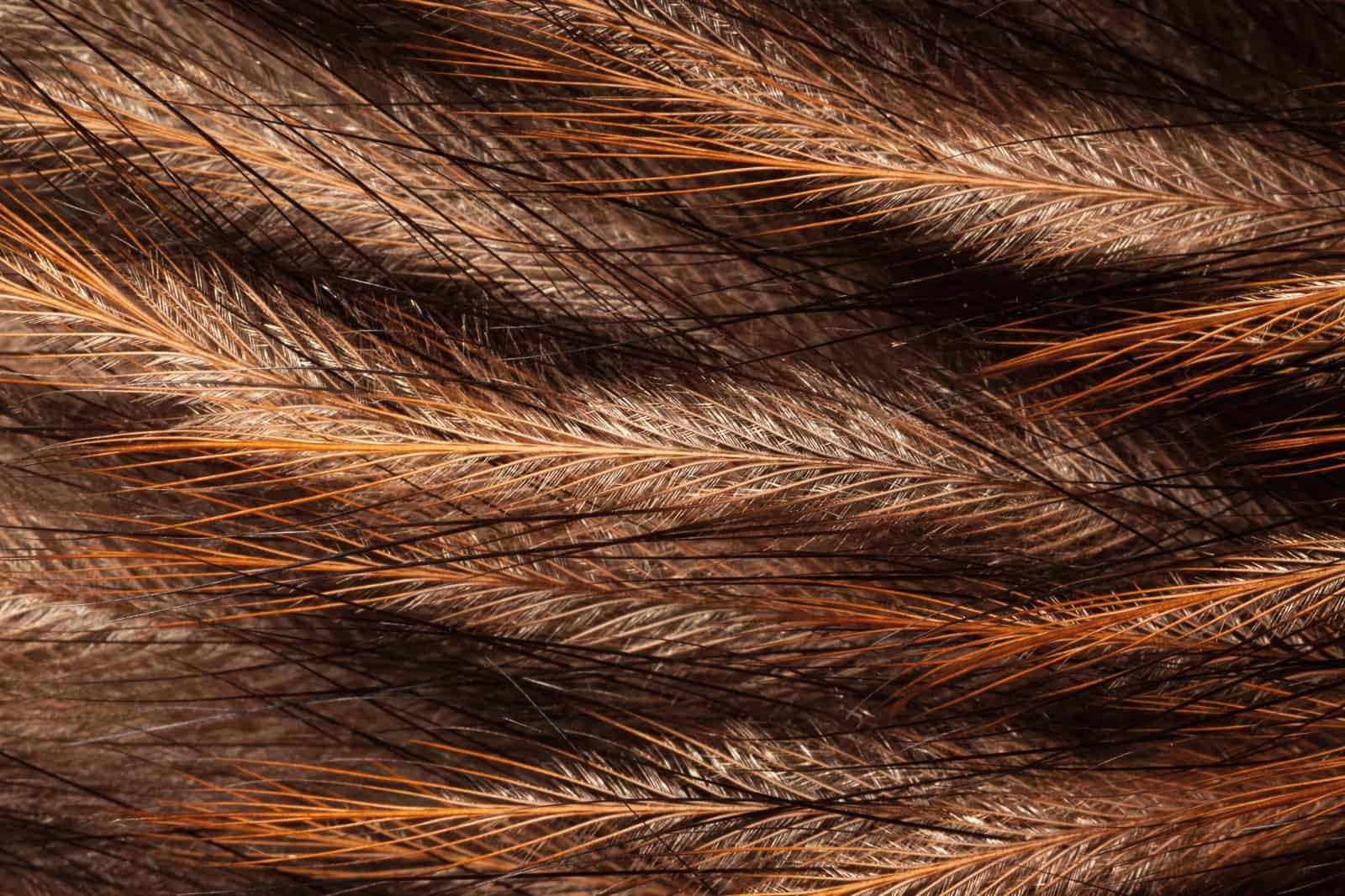
Was this page helpful?
Our commitment to delivering trustworthy and engaging content is at the heart of what we do. Each fact on our site is contributed by real users like you, bringing a wealth of diverse insights and information. To ensure the highest standards of accuracy and reliability, our dedicated editors meticulously review each submission. This process guarantees that the facts we share are not only fascinating but also credible. Trust in our commitment to quality and authenticity as you explore and learn with us.
